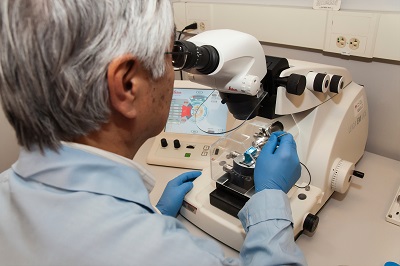What are the requirements for obtaining EU CE certification for Class D medical devices?
Release time:2024-08-19 14:06:30
The author:
source:
Regulatory Framework: Ensure that your device complies with the MDR, which outlines the essential requirements for medical devices in the EU.
To obtain EU CE certification for Class D medical devices, you must meet several stringent requirements under the European Union Medical Device Regulation (MDR) 2017/745. Here’s a detailed overview of the requirements:
1. Compliance with MDR 2017/745
- Regulatory Framework: Ensure that your device complies with the MDR, which outlines the essential requirements for medical devices in the EU.
2. Technical Documentation (Design Dossier)
- Device Description: Provide a detailed description of the device, including its intended use, design, and operational principles.
- Risk Management: Implement a comprehensive risk management process (e.g., ISO 14971) and provide documentation on identified risks and their mitigation.
- Clinical Evaluation: Present robust clinical data demonstrating the device’s safety and performance. This may include clinical trials, studies, and literature reviews.
- Performance and Safety Testing: Include results from testing to verify the device’s performance and safety.
- Manufacturing Information: Detail manufacturing processes, quality control measures, and facilities.
- Labeling and Instructions for Use: Ensure clear and comprehensive labeling and user instructions compliant with MDR requirements.
3. Quality Management System (QMS)
- ISO 13485 Compliance: Implement and maintain a QMS that meets the requirements of ISO 13485 or an equivalent standard.
- Documentation: Provide detailed documentation of your QMS procedures, including quality control, production processes, and post-market surveillance.
4. Clinical Evidence
- Clinical Trials: For Class D devices, clinical evidence is crucial. Conduct clinical trials if necessary and provide evidence that the device performs as intended.
- Post-Market Clinical Follow-up (PMCF): Develop a PMCF plan to gather additional clinical data after the device is on the market.
5. Notified Body Involvement
- Selection: Choose a Notified Body accredited for Class D devices.
- Application: Submit your Technical Documentation (Design Dossier) to the Notified Body along with your application for CE certification.
- Assessment: The Notified Body will review your documentation and may perform an on-site audit of your facilities and QMS.
6. Risk Management and Mitigation
- Risk Analysis: Conduct a thorough risk analysis and document how risks are managed throughout the device lifecycle.
- Mitigation Strategies: Provide evidence of effective risk mitigation measures.
7. Post-Market Surveillance
- Monitoring: Implement a post-market surveillance system to monitor the device’s performance in the market and gather feedback.
- Reporting: Report any adverse events and implement corrective actions as needed.
8. Regulatory Updates and Compliance
- Ongoing Compliance: Keep your documentation, QMS, and clinical evaluations up to date. Be prepared for periodic reviews and audits by the Notified Body.
- Changes: Report significant changes to the device or its use to the Notified Body.

Contact Us:
Whatsapp or Wechat:+86 15816864648;email address:hito.lin@grzan.cn
.png)
.jpg)
.png)

.png)